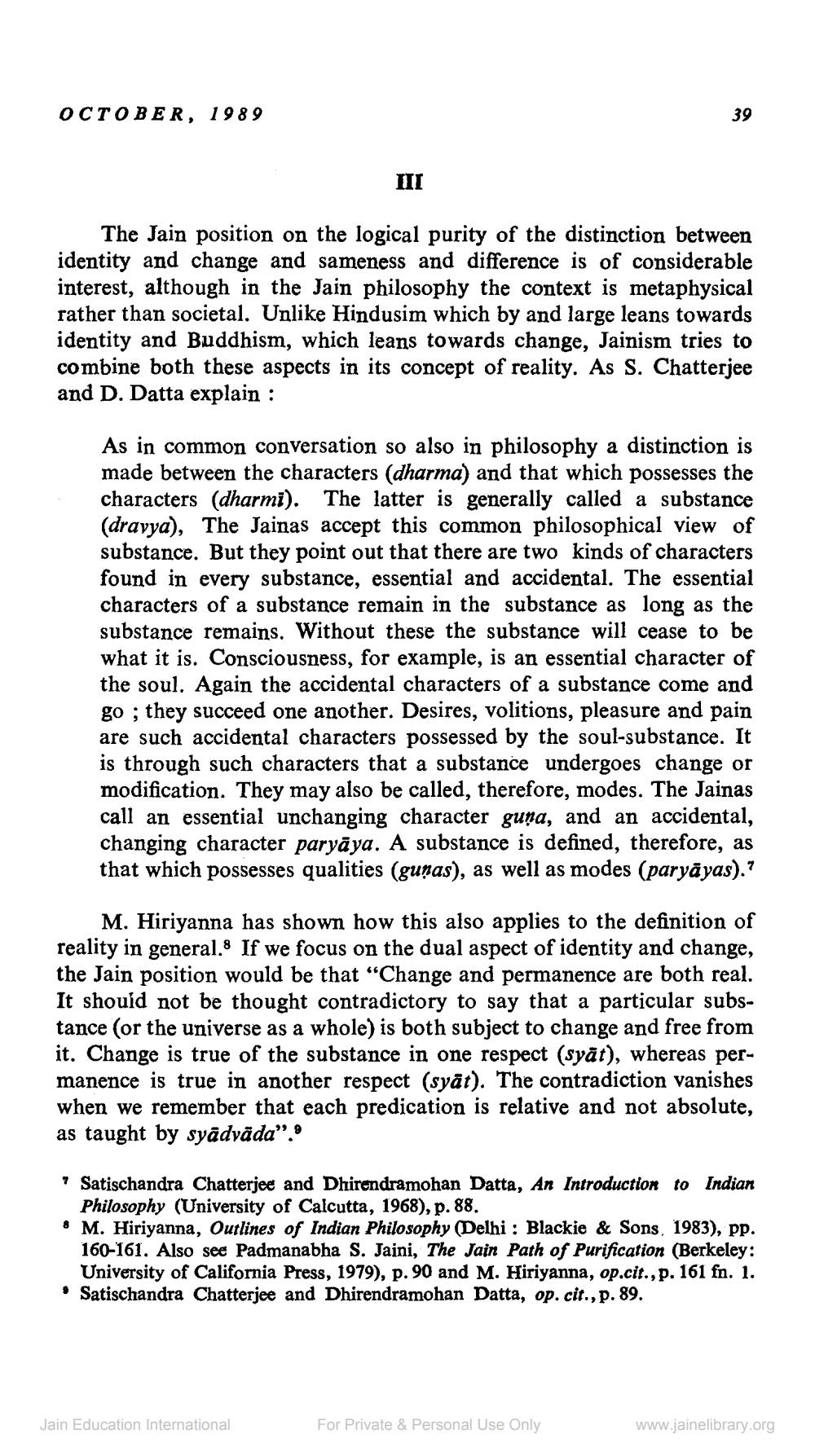________________
OCTOBER, 1989
39
III
The Jain position on the logical purity of the distinction between identity and change and sameness and difference is of considerable interest, although in the Jain philosophy the context is metaphysical rather than societal. Unlike Hindusim which by and large leans towards identity and Buddhism, which leans towards change, Jainism tries to combine both these aspects in its concept of reality. As S. Chatterjee and D. Datta explain :
As in common conversation so also in philosophy a distinction is made between the characters (dharma) and that which possesses the characters (dharmi). The latter is generally called a substance (dravya), The Jainas accept this common philosophical view of substance. But they point out that there are two kinds of characters found in every substance, essential and accidental. The essential characters of a substance remain in the substance as long as the substance remains. Without these the substance will cease to be what it is. Consciousness, for example, is an essential character of the soul. Again the accidental characters of a substance come and go ; they succeed one another. Desires, volitions, pleasure and pain are such accidental characters possessed by the soul-substance. It is through such characters that a substance undergoes change or modification. They may also be called, therefore, modes. The Jainas call an essential unchanging character guna, and an accidental, changing character paryāya. A substance is defined, therefore, as that which possesses qualities (gunas), as well as modes (paryāyas).?
M. Hiriyanna has shown how this also applies to the definition of reality in general. If we focus on the dual aspect of identity and change, the Jain position would be that "Change and permanence are both real. It should not be thought contradictory to say that a particular substance (or the universe as a whole) is both subject to change and free from it. Change is true of the substance in one respect (syāt), whereas permanence is true in another respect (syāt). The contradiction vanishes when we remember that each predication is relative and not absolute, as taught by syâdvāda". "
Satischandra Chatterjee and Dhirendramohan Datta, An Introduction to Indian
Philosophy (University of Calcutta, 1968), p. 88. & M. Hiriyanna, Outlines of Indian Philosophy (Delhi : Blackie Sons, 1983), pp.
160-161. Also see Padmanabha S. Jaini, The Jain Path of Purification (Berkeley:
University of California Press, 1979), p. 90 and M. Hiriyanna, op.cit., p. 161 fn. 1. • Satischandra Chatterjee and Dhirendramohan Datta, op. cit., p. 89.
Jain Education International
For Private & Personal Use Only
www.jainelibrary.org




